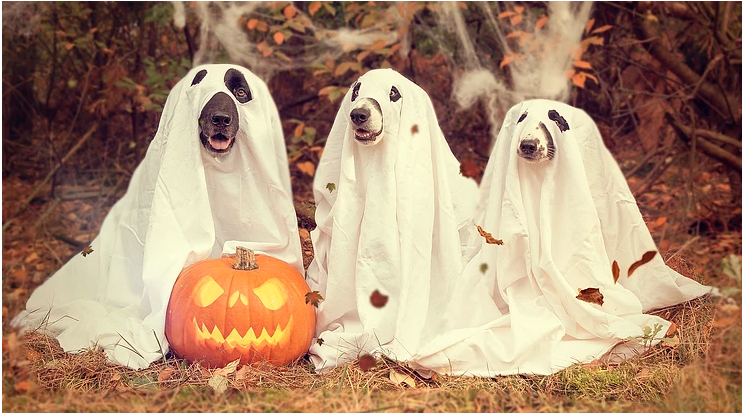With Halloween right around the corner, you may have a stash of Halloween candy hidden from your kids (and yourself) around the house to hand out to trick-or-treaters! While overindulging in Halloween chocolate may bring on a sickly stomach ache in humans, these sweet treats are especially toxic for dogs.
With kids eating sweets by the bowl-full and an influx of candy and wrappers littering sidewalks and streets after the festivities are over, it’s not hard for a dog to get its paws on a piece of chocolate. How much chocolate is deadly to your four-legged friend? What are the signs of chocolate poisoning? What do you do if your dog does accidentally consume chocolate? Read on to learn more!
Dark Chocolate Is Most Dangerous
Caffeine and theobromine are the two toxic substances in chocolate that dogs can’t easily metabolize. As a general rule of thumb, the darker the chocolate, the more theobromine it contains – therefore the more dangerous it can be to dogs. Unsweetened baker’s chocolate, for example, contains up to 450 mg of theobromine per ounce, compared to milk chocolate which contains up to 60 mg per ounce. While white chocolate contains even less theobromine than milk chocolate, it’s still best to keep it out of your pets’ reach.
The Amount Eaten and Size of Dog Matters
It’s the dose that makes the poison! Pets that ingest a few M&Ms or a bite or two of a chocolate chip cookie are unlikely to show symptoms of Chocolate poisoning. However, sometimes only a small piece can be cause for concern. Larger dogs can typically ingest more chocolate than smaller breeds with fewer consequences – so a Great Dane may be able to eat a few Hershey’s Kisses without symptoms, which a Chihuahua will suffer immediately. When contacting your vet, your doctor will want to know what type of chocolate was eaten, an estimate of how much was eaten, your dog’s weight and how long ago the chocolate was consumed.
Signs of Chocolate Poisoning
Depending on the type of chocolate, the amount eaten and the size of your dog, signs of toxicity can range from mild to severe and life-threatening. Signs of chocolate poisoning usually appear within 6-12 hours after your dog has eaten it, and may last up to 72 hours, including the following:
- Vomiting
- Diarrhea
- Lethargy
- Panting and pacing
- Severe agitation
- Increased urination
- Tremors
- Elevated/abnormal heart rate
- Seizures
- Death
If you suspect your dog ate chocolate, call your veterinarian or the Pet Poison Helpline (855-213-6680)
If you believe your dog ate chocolate, call your veterinarian immediately and/or call the Pet Poison Helpline for advice. Based on your dog’s size and the amount and type of chocolate consumed, your veterinarian may recommend that you simply monitor him for the clinical signs listed above and come back if his condition worsens.
In other cases, your veterinarian may prefer you bring the dog into the clinic. If your pet consumed the chocolate less than two hours ago, your veterinarian may induce vomiting and give him several doses of activated charcoal, which works to move the toxins out of the body without being absorbed into the bloodstream. For more severe cases, veterinary intervention may be needed to provide supplemental treatment such as medication or IV fluids. Dogs suffering from seizure may need to be monitored overnight.
If you think your pet has ingested chocolate, click here to find your clinic’s contact information and local hours.
While your pets will be skipping out on the candy, get them a little something special this month! We’re offering 10% off Food and Treats at all of our Animal Health Center locations! Stop by and stock up today!



